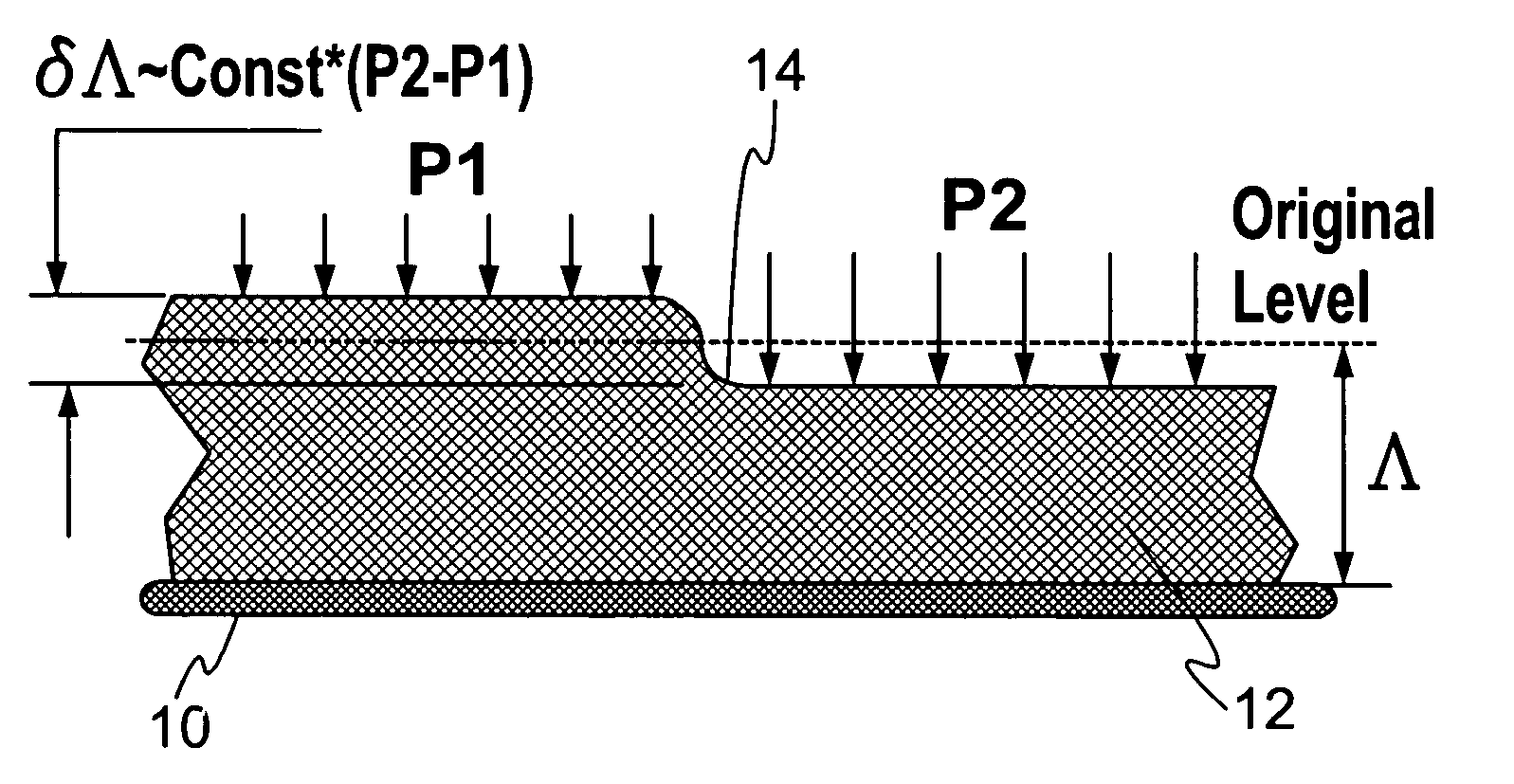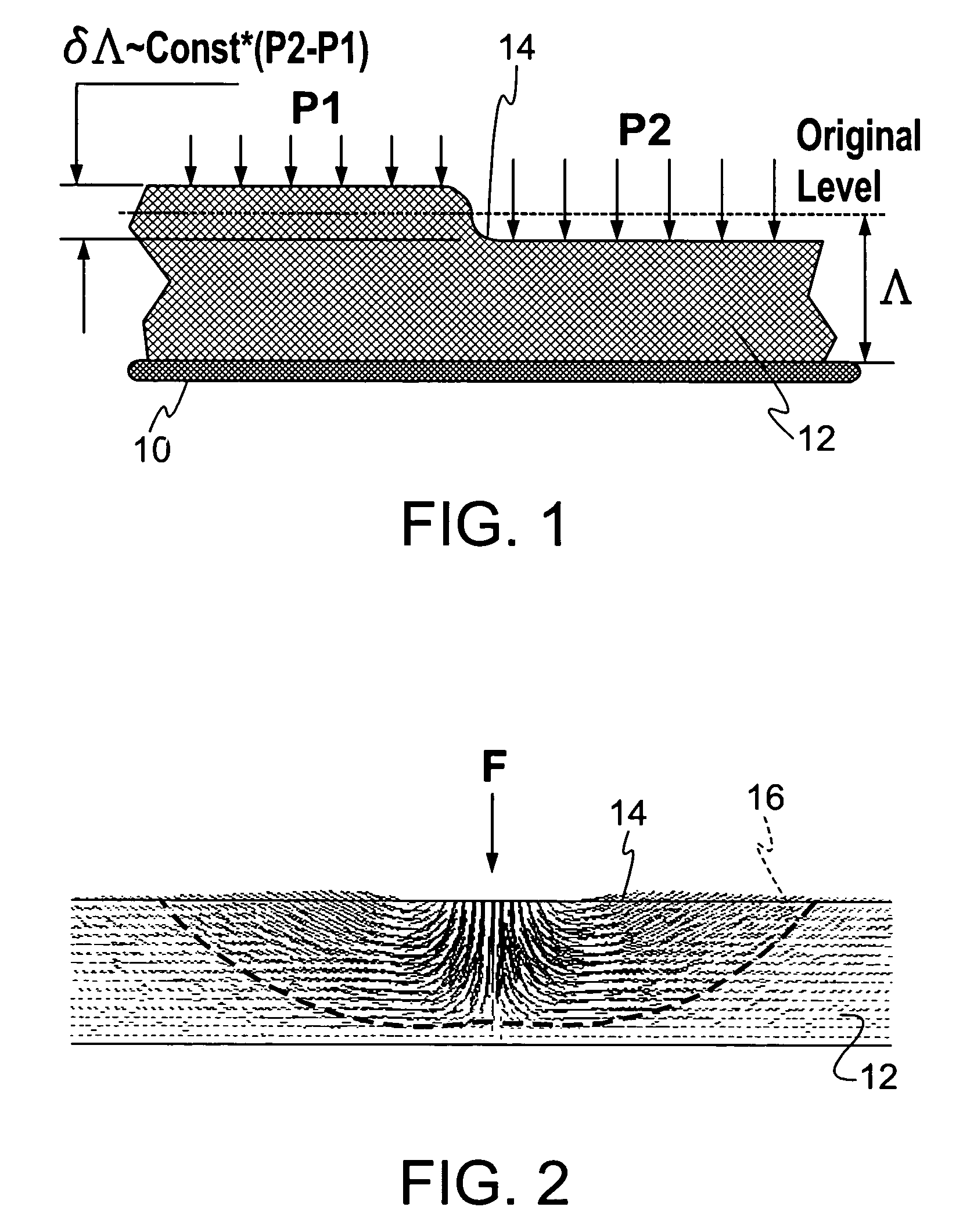Method for determining a surface contact force
a contact force and surface pressure technology, applied in the direction of force measurement by measuring optical property variation, instruments, machines/engines, etc., can solve the problems of slow response time, significant barrier, and significant distance between taps that require additional sophisticated interpolation procedures
- Summary
- Abstract
- Description
- Claims
- Application Information
AI Technical Summary
Benefits of technology
Problems solved by technology
Method used
Image
Examples
examples
[0071]Referring to FIG. 13, a delta wing model, defined by phantom line 36, was used to test the PSF technique at a flow velocity of 15 m / s and an angle of attack of 10°. The model surface was covered with a polymer layer having a thickness of 1 mm, where the film is positioned within a cavity of a depth substantially equal to the thickness of the film to position the upper surface of the film generally coplanar with the surrounding surface of the wing. A fine phosphor powder was applied on top of the PSF to create a pattern that could be used for shear deformation measurements.
[0072]FIG. 13 illustrates the result of a cross correlation analysis of the shear displacement field. It can be seen that the aerodynamic load produces a vortex region creating a narrow decompression region, generally depicted by 40, above the wing. The decompression region 40 produces a vertical component of the shear vector. The region 42 depicts a substantially greater vertical component of shear vector wi...
PUM
| Property | Measurement | Unit |
|---|---|---|
| thickness | aaaaa | aaaaa |
| diameter | aaaaa | aaaaa |
| thickness | aaaaa | aaaaa |
Abstract
Description
Claims
Application Information
 Login to View More
Login to View More - R&D
- Intellectual Property
- Life Sciences
- Materials
- Tech Scout
- Unparalleled Data Quality
- Higher Quality Content
- 60% Fewer Hallucinations
Browse by: Latest US Patents, China's latest patents, Technical Efficacy Thesaurus, Application Domain, Technology Topic, Popular Technical Reports.
© 2025 PatSnap. All rights reserved.Legal|Privacy policy|Modern Slavery Act Transparency Statement|Sitemap|About US| Contact US: help@patsnap.com



